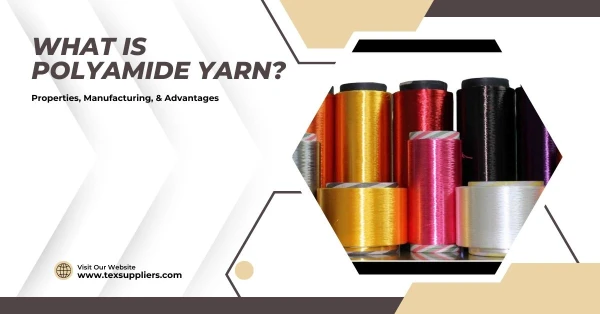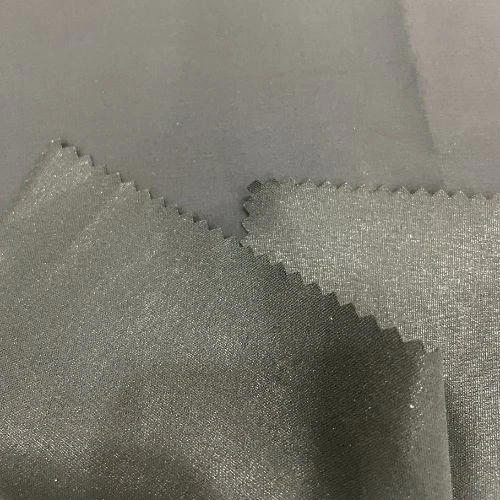With a view to creating a lightweight and longer yarn, we cannot think better of than Polyamide yarn. Sometimes polyamide yarn is recognized as Nylon. The material in the yarn form is durable and elastic. Qualities are there to make the yarn great to mix with other materials like wool and cotton. Polyamide yarn can be durable based on the yarn blends.
Table Of Contents
What is Polyamide Yarn?
Polyamide yarn refers to the synthetic materials made of polymers. It is in a colloquial position get referred as nylon. Polyamide yarn gets to be used in a yarn by melting down process. As well as the polyamide gets stretched out into a long strand that get spun into the yarn.
Moreover, the light fibers, heated ones, go through a process of creating a soft at the same time insulating surface areas. Polyamide yarn made of polyester seems to be durable. It becomes more stronger when compared to natural fiber materials.
What is Polyamide Yarn Made of?
Polyamide fabric is made of several synthetic materials. This yarn has a fabric named Polyamide fabric. It is also known as nylon, nomex, Kevlar, etc. Polyamide is nothing but a combination of different fabrics made of polyamide monomer strings. The different types of polyamide yarn derive from the carbon-based molecules. There are also synthetic fibers from which the yarn derives from. For instance, rayon, cotton, and organic fabric.
The polyamide history comes from the year 1939, the World’s Fair in the New York. From that year, it was recognized as the strongest yarn. The earlier use of this polyamide yarn is about the parachute materials from the era of World War II. Women used to wear polyamide-made apparel. Today, polyamide yarn covers about 12% of the global fiber production of synthetic materials. Consumer loves this polyamide yarn due to its softness and elasticity. Polyamide yarn also refers to the molecule of repeated amide bonds.
Polyamide Yarn Manufacturing
9 steps are there in the polyamide yarn manufacturing in total. They are as follows:
Step 1: Extracting Diamine Acid
Diamine Acid, which is a monomer, gets extracted in the first place, from the crude oil.
Step 2: Combining
After the first step, diamine acid gets a force to enter the adipic acid reaction. It also creates a polymer named as nylon salt.
Step 3: Heating
Crystallized substance gets heated to form a substance of molten.
Step 4: Extrusion
Substance follows extrusion through a metal-like spinneret.
Step 5: Loading
Loading of the substance onto a bobbin.
Step 6: Stretching
Fibers get stretched in order to increase their strength.
Step 7: Drawing
Fibers become wound onto the other spool in a drawing process.
Step 8: Spinning
Fibers are ready to get spun in the garments.
Step 9: Finishing
The fiber gets mixed up with other type of textile for consumer use.
The common source of the polyamide monomer is petroleum oil. Apart from the mentioned one, the monomer named hexamethylenediamine also gets covered up as the source.
Polyamide Yarn Properties
|
Yarn Name |
Polyamide Yarn |
|
Yarn Manufacturing Materials |
Synthetic Materials, monomers |
|
Yarn Breathability |
Low |
|
Yarn Moisture-Wicking Abilities |
Medium |
|
Heat Retention Abilities |
Medium |
|
Stretchability |
High |
|
Prone to Pilling |
High |
|
Application |
Yoga pants, stockings, sportswear, gears-riot and firefighting |
Types of Polyamide Yarn
Polyamide yarn has three significant types. They are- organic polyamides, aramids, and nylon. Each of the type’s description is as follows:
01. Organic Polyamides

They are the fabrics made of polyamide chains. They are no synthetic. Moreover, wool and silk are two important organic polyamides.
02. Nylon

Nylon and Polyamide yarn are synonymous. However the polymer is mostly used in the application of the consumer.
03. Aramids

Aramids are not common in apparel, but they remain a significant type of polyamide fabric.
Characteristics of Polyamide Yarn
Although Polyamide yarn has a handful of key features, the following two are worth mentioning. They are as follows:
Cost
In the case of Nylon material, the product of polyamide yarn is inexpensive. But, in the case of Kevlar and Nomex, the price gets increased up.
Environmentally Unacceptable
Nylon and polyamides are not naturally acceptable. The production process damages the ecosystem as well.
Polyamide Yarn Advantages
The advantages are many in number. Take away these doses of advantages regarding Polyamide Yarn:
- Polyamide yarn has been a boon in the application areas of knitting and crocheting. Since the year 1935, the polyamides have been recognized as the natural fiber.
- It improves strength and novelty.
- Polyamide yarns are durable in nature.
- Nylon in the form of polyamide yarn, ensures the shimmer and elasticity.
Applications
Polyamide yarn has a variety of application areas. Most of the application areas are now in the non-textile products. They are as follows:
As an Alternative:
Polyamide yarn can be an alternative to silk in the case of women’s stockings.
For Apparel:
Polyamide yarn has uses in t-shirts, pants, underwear, shorts, and stretch pants.
Conclusion
Polyamide yarns have the most uses in apparel brands. It is low cost if it gets produced in the form of nylon. This cheapness is the highest advantage area of the polyamide yarn. The sad part is that the polyamide fabric is not suitable for the environment. It has an increasingly catastrophic impact on people, animals, and the planet. Apart from this factor, the polyamide yarn improves the strength of the yarn.
















Comments - 00
Leave A Reply
Thanks for choosing to leave a comment.